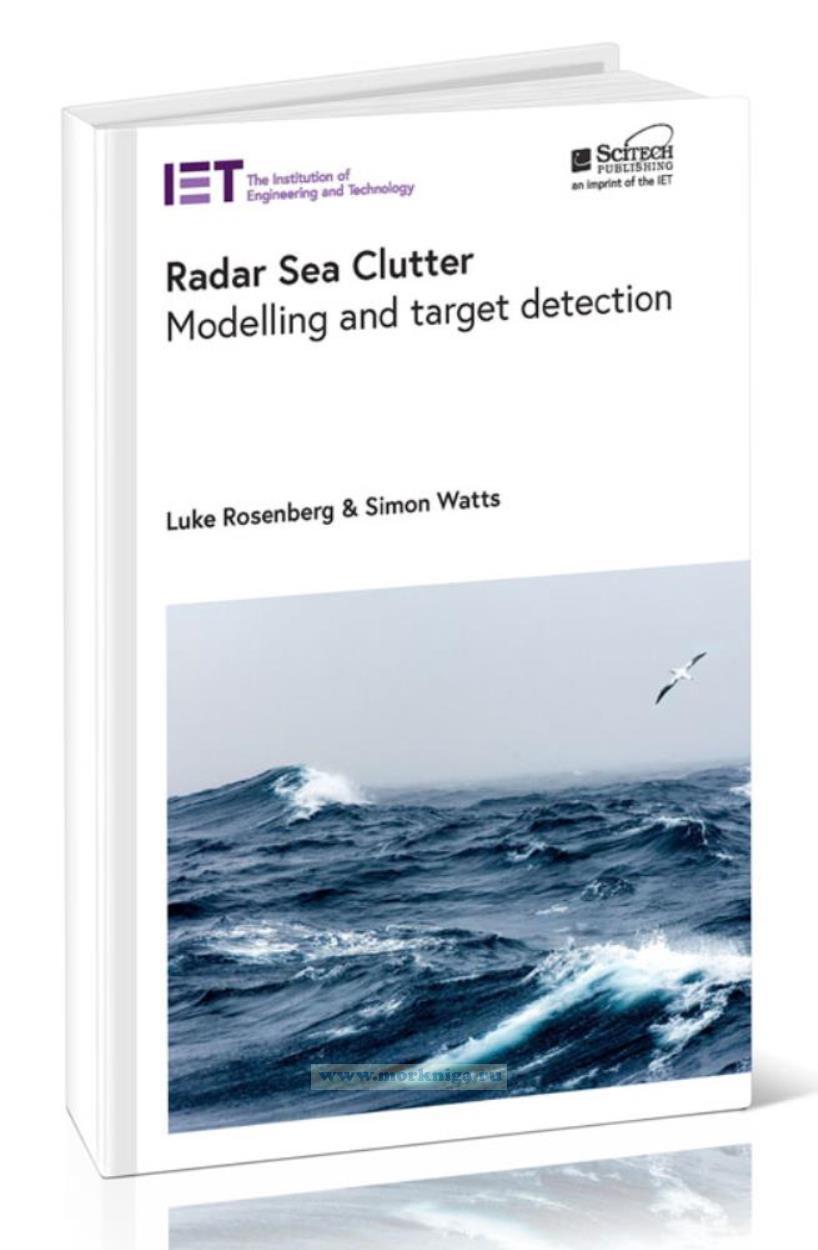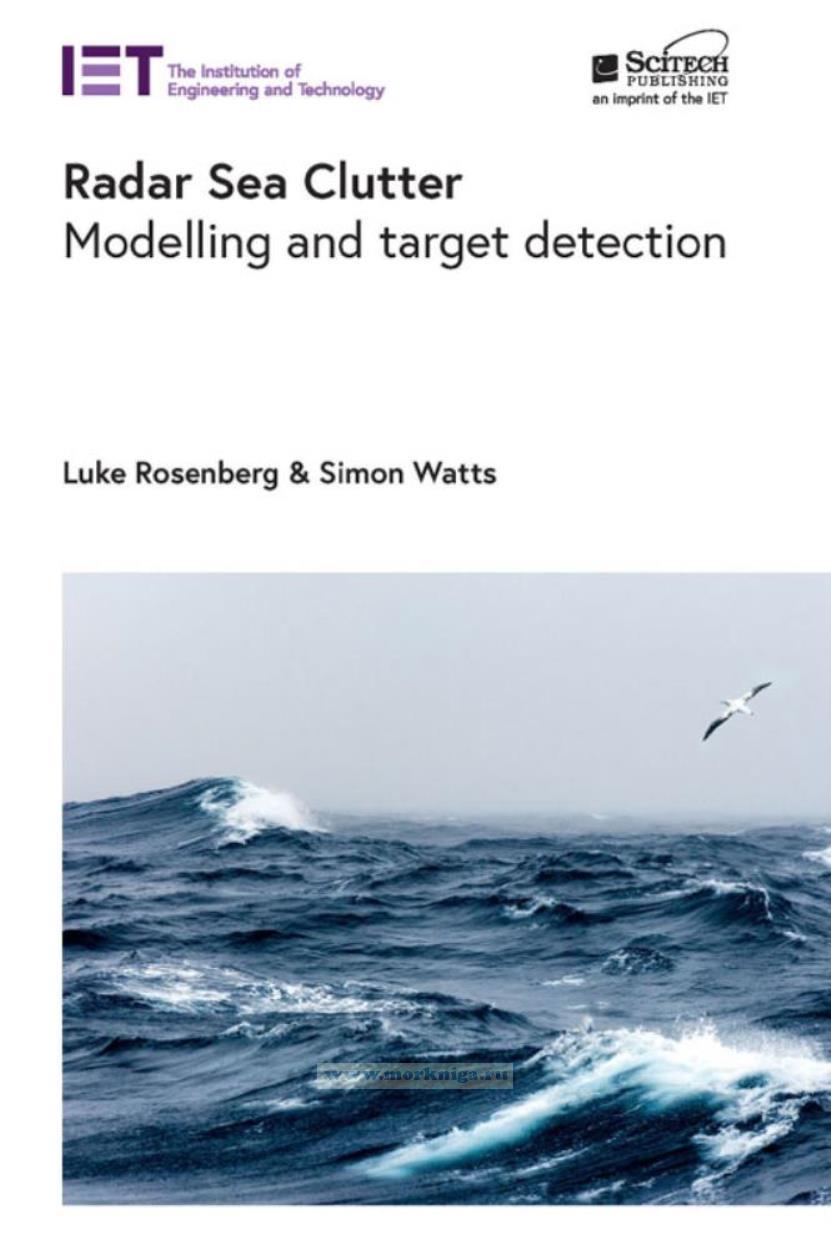Radar Sea Clutter. Modelling and target detection/Радиолокационные помехи на море. Моделирование и обнаружение целей
Издание на английском языке
Radar for maritime surveillance has been essential capability since its first development in the 1930s. The original requirements were for military applications, but today there are also many important paramilitary and civil uses. The first maritime surveillance radars in World War II quickly discovered that returns from the sea, soon to be known as sea clutter, were often the limiting factor when attempting to detect small targets while controlling false alarms. This remains true for modern radars, where the detection of small, slow moving targets on a rough sea surface remains one of the main drivers for maritime radar design, particularly in the development of detection processing.
Contents
About the authors
Acknowledgements
List of symbols
List of acronyms
1 Introduction
1.1 Prologue
1.2 Maritime surveillance radars
1.3 The sea surface
1.4 Clutter characteristics
1.5 Sea clutter modelling
1.5.1 Electromagnetic scattering models
1.5.2 Empirical modelling
1.6 Data sets
1.6.1 Ingara X-band data set
1.6.2 CSIR X-band data set
1.7 Book outline
References
2 Monostatic sea clutter
2.1 Introduction
2.2 Mean backscatter
2.2.1 Anomalous propagation
2.2.2 Multipath scattering
2.2.3 GO-SSA mean backscatter models
2.3 Amplitude distributions
2.3.1 Distribution models
2.3.2 Example fits
2.3.3 Effective shape relationships
2.4 Sea-spike characteristics
2.5 Doppler characteristics
2.5.1 Coherent amplitude statistics
2.5.2 Mean Doppler spectra
2.5.3 Time and range varying spectra
2.6 Texture correlation
References
3 Bistatic sea clutter
3.1 Introduction
3.2 Bistatic geometry
3.3 Active bistatic radar
3.3.1 Sea clutter measurements
3.3.2 In-plane reflectivity
3.3.3 Out-of-plane reflectivity
3.3.4 Amplitude statistics
3.3.5 Correlation
3.3.6 Doppler spectra
3.3.7 Sea spikes
3.4 Passive bistatic radar
3.4.1 Sea clutter measurements
3.4.2 Data processing
3.4.3 Delay/Doppler amplitude statistics
3.4.4 Time domain amplitude statistics and correlation
3.4.5 Doppler spectra
3.4.6 Summary
3.5 Discussion on bistatic sea clutter
References
4 Parametric modelling
4.1 Introduction
4.2 Monostatic mean backscatter
4.2.1 Royal Radar Establishment model
4.2.2 Sittrop’s model
4.2.3 Georgia Institute of Technology model
4.2.4 The hybrid model
4.2.5 The Technology Service Corporation model
4.2.6 The Masuko models
4.2.7 The Imaging Radar Systems Group model
4.2.8 Naval Research Laboratory model
4.2.9 DSTG continuous mean backscatter model
4.3 Bistatic mean reflectivity
4.3.1 In-plane scattering
4.3.2 Out-of-plane scattering
4.4 K-Distribution shape
4.4.1 Low grazing angle models
4.4.2 DSTG continuous shape model
4.5 Doppler spectrum
4.5.1 Mean Doppler spectrum models
4.5.2 Temporal decorrelation model
4.5.3 Evolving Doppler spectrum model
4.6 Spatial correlation
References
5 Sea clutter simulation
5.1 Introduction
5.2 Uniform Doppler spectrum
5.2.1 Memoryless non-linear transform
5.3 Evolving Doppler spectrum
5.3.1 Frequency domain simulation
5.3.2 Time domain simulation
5.3.3 Multiple phase centres
5.3.4 Scanning radar scenario
5.3.5 Simulation examples
5.4 Other simulation algorithms
5.4.1 Spatially and temporally limited clutter model
5.4.2 Compound G2 model
5.4.3 Algorithm comparison
5.4.4 Summary
References
6 Performance prediction modelling
6.1 Introduction 1
6.2 Radar range equation
6.3 Non-coherent processing
6.3.1 Constant target
6.3.2 Fluctuating target
6.3.3 Compound clutter
6.3.4 Correlated returns
6.4 Coherent processing
6.4.1 Doppler filtering
6.4.2 Adaptive processing
6.5 Assessing end-to-end radar performance
6.5.1 Radar performance examples
6.5.2 Simulated performance prediction
6.5.3 Discussion
References
7 Maritime target detection techniques
7.1 Introduction
7.2 Non-coherent detection
7.2.1 Clutter statistics
7.2.2 Constant false alarm rate detectors
7.2.3 CA-CFAR performance in spatially correlated clutter
7.2.4 Scan-to-scan processing
7.2.5 Alternative methods
7.3 Pareto CFAR detectors
7.3.1 Type I transformed CFAR
7.3.2 Type I complete sufficient statistics
7.3.3 Type II transformed CFAR
7.3.4 Type II Bayesian CFAR
7.3.5 Detection results
7.3.6 Summary
7.4 Coherent detection
7.4.1 Multichannel radar
7.4.2 Coherent detection strategies
7.4.3 Pre-Doppler whitening
7.4.4 Post-Doppler detection
7.4.5 Post-Doppler whitening
7.4.6 Model-based detection
7.4.7 Doppler spectrum aliasing
7.5 Detection in heterogeneous environments
7.5.1 The single data set detector
7.5.2 Fixed scale hybrid
7.5.3 Variable scale hybrid
7.5.4 Texture estimation and normalisation hybrid
7.5.5 Detection results
References
8 New approaches for target detection
8.1 Time/frequency target separation
8.1.1 Sub-band isolation and reconstruction
8.1.2 Sub-band selection
8.1.3 Detection performance
8.1.4 Summary and future directions
8.2 Sparse signal separation
8.2.1 Tuned Q wavelet transform
8.2.2 Short-time Fourier transform
8.2.3 Detection approaches
8.2.4 Detection performance
8.2.5 Summary and further developments
8.3 Dictionary learning
8.3.1 Dictionary learning techniques
8.3.2 Performance evaluation
8.3.3 Detection performance
8.3.4 Summary and further developments
8.4 Track before detect
8.4.1 Mathematical models
8.4.2 The Bernoulli track before detect filter
8.4.3 Simulation details
8.4.4 Detection and tracking performance
8.4.5 Summary and further developments
References
Appendix A: Goodness of fit metrics
A.1 Chi-square test
A.2 Kolmogorov–Smirnov test
A.3 Bhattacharyya distance
A.4 Threshold error
References
Appendix B: Bimodal parameters for the evolving Doppler spectrum
References
Appendix C: Atmospheric and precipitation losses
References
Index

